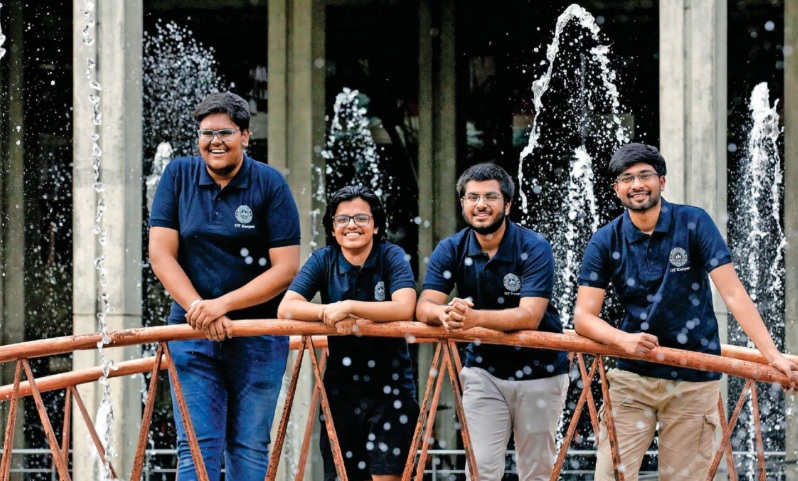
Imagination can run wild in a classroom, but it finds wings at the flight laboratory of the Indian Institute of Technology Kanpur. Inside, half a dozen training aircraft are parked in the hangar. Apart from an airstrip, IIT Kanpur boasts three helipads, too. No other institute boasts such a facility, says Prof G.M. Kamath, head of the department of aerospace engineering, IIT Kanpur. Thanks to the lab, students here get hands-on training.
"We get pilots to fly these aircraft. It benefits students as they can do experiments based on the manoeuvres," says Kamath. "This helps the students get a feel of the aircraft and helps them design better aircraft."
The flight laboratory runs courses in flight testing, wherein students collect, analyse and evaluate performance and handling qualities of the airplanes. And so, students from across the country-from the Punjab Engineering College (PEC) Chandigarh to IIT Bombay, IIT Kharagpur, IIT Madras and the Madras Institute of Technology-flock to the lab. A few years ago, students from the Nanyang Technological University Singapore also visited the lab.
"Close to 300 students from outside come here every year for a 10-day course," says Kamath.
The flight lab is closely monitored, audited and certified by the Directorate General of Civil Aviation. On prominent display is the HANSA-3, the first indigenously produced composite aircraft in India. Designed by the National Aerospace Laboratories in Bengaluru, the aircraft carries fibre optic sensors developed by IIT Kanpur's aerospace engineering department. The sensors-each as thin as a hair strand-help monitor the structural health of the aircraft for five to 10 years.
"One can monitor whether the aircraft went through some kind of turbulence or if it had a hard landing," explains Kamath. "Each and every aspect of the flight can be monitored."
Denne historien er fra June 30, 2024-utgaven av THE WEEK India.
Start din 7-dagers gratis prøveperiode på Magzter GOLD for å få tilgang til tusenvis av utvalgte premiumhistorier og 9000+ magasiner og aviser.
Allerede abonnent ? Logg på
Denne historien er fra June 30, 2024-utgaven av THE WEEK India.
Start din 7-dagers gratis prøveperiode på Magzter GOLD for å få tilgang til tusenvis av utvalgte premiumhistorier og 9000+ magasiner og aviser.
Allerede abonnent? Logg på

Use multi-asset investing to overcome portfolio volatility
EQUITY MARKETS have been choppy during this year. After rallying for the better part of the first nine months of 2024, equities corrected sharply in October and November, before taking off once again on rally mode in December.

Twist of faith
Upamanyu Chatterjee is back with his wry sense of humour in his new novel, and most of it is directed at religion and spirituality

THE GLORY OF SARI
Saris of Memory weaves together history and textiles, highlighting key moments from the author's collection

We win together
We invented chess, which was pretty cool of us. The original game 'chaturanga'that is four divisions (infantry, cavalry, elephantry and chariotry)-was a war strategy game. When the game travelled to the Middle East, they mangled the Sanskrit and it ended up being called 'shatranj' instead.

BEATS THAT HEAL
Music ignites the light within us, says Grammy-winner Chandrika Tandon

Older, smarter, sexier
Those who worship him regardless of where he works have continued to do so. Such is the power of Alessandro Michele, that after being the face of some mega brands for 10 years (namely Gucci and now Valentino), he remains bigger than the labels themselves. His debut collection for Valentino was presented at the recent Paris Haute Couture Week, and it has been adored by his adorers.

The road to peace
Future political dialogues should explore means of ensuring a more robust autonomy to tribal communities

Diary of a Sherpa
Amitabh Kant's new book is a comprehensive account of the G20 Summit held in Delhi in 2023

The annoying orange
Everything is great. All is sunshine. I am an eternal optimist.\" It's the fad of our TikTok times everything is not great, the sun sets daily, nothing is eternal. If anything, everything is ephemeral, night brings darkness, and optimism often crumbles under the weight of history. British philosopher Roger Scruton warned: \"Hope untempered by the evidence of history is a dangerous asset, one that threatens not only those who embrace it, but all those within range of their illusions.\"

NO SEAT, YET UPBEAT
The Congress is buoyed by its increased vote share in Delhi, and feels it can push the AAP into further decline